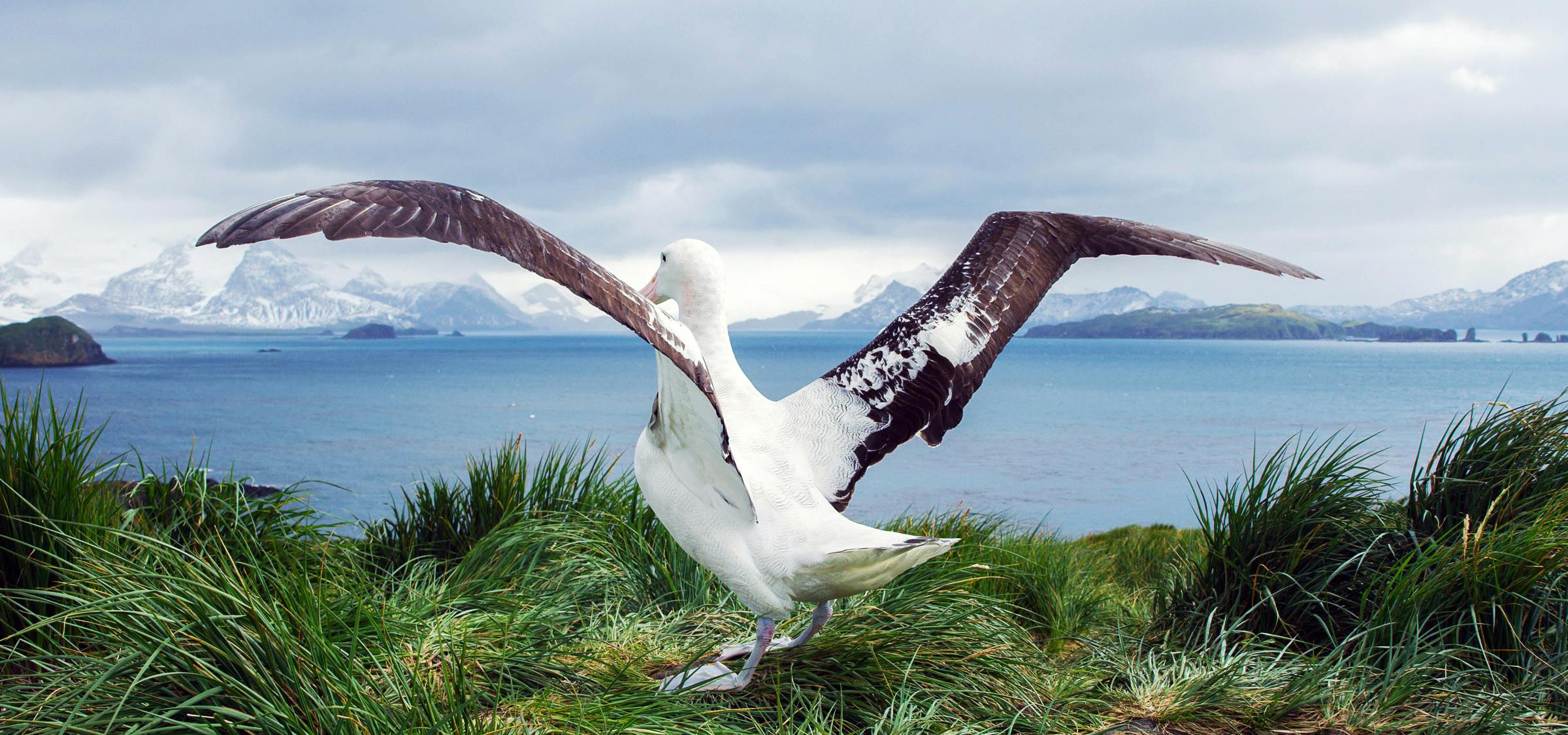Behind the Lens: In Antarctica, Eye-to-Eye with a Wandering Albatross
“It’s virtually impossible to appreciate the enormity of a Wandering Albatross’s wingspan until you see it in person, up-close.”
On his first-ever trip to South Georgia, Benn Berkeley—a talented Expedition Filmmaker and one of Silversea’s Onboard Photographers—came eye-to-eye with the proud owner of the animal kingdom’s largest wingspan. The curious animal seemed drawn to the lens, approaching Berkeley of its own accord. This unique moment, experienced in South Georgia’s remote Prion Island, ranks among the most memorable in Berkeley’s career.
“I’d heard lots of stories from other photographers, Expedition Team members and some of Silversea’s guests who said the abundance of wildlife on South Georgia was unlike anything else on the planet. Above all else, I was drawn into their stories of the Wandering Albatross.”
Benn Berkeley, Expedition Filmmaker and Onboard Photographer
Venturing South: “It was my first-ever time to the Sub-Antarctic,” begins Berkeley. “South Georgia had been on my list of dream destinations for about 15 years, so it was a long time coming. I used to work as a mountain guide so I was very interested to learn more about historical expeditions to Antarctica, like those of Amundsen, Scott and Shackleton, and retrace their steps. Crossing the Drake Passage to follow in their footsteps seemed to bring the history to life, but I was most interested in the region’s nature and I was eager to photograph the animals. I’d heard lots of stories from other photographers, Expedition Team members and some of Silversea’s guests who said the abundance of wildlife on South Georgia was unlike anything else on the planet. Above all else, I was drawn into their stories of the Wandering Albatross.”
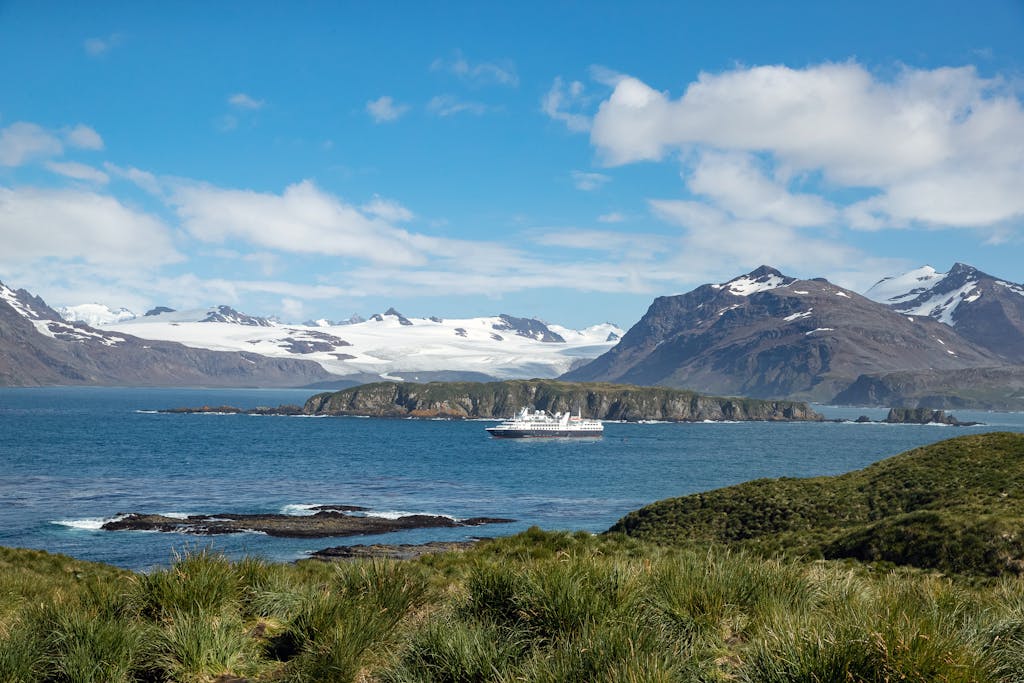
“Departing Ushuaia, we were accompanied by albatrosses as we crossed the Drake Passage at the start of the voyage; they flew alongside Silver Explorer, which was incredible to see. I was immediately struck by their huge size. I had already pinpointed Prion Island as a destination within South Georgia that I wanted to visit because I knew it was a prime nesting site for the birds and a popular breeding ground,” continued Berkeley.
A Game of Chance: “As with all wildlife photography, there was no guarantee that I would manage to get high-quality video footage of the Wandering Albatross. It was very much dependent on the behavior of the birds on a given day. Generally speaking, filmmakers and photographers have to work hard to even catch a glimpse of the animal’s 3.5m wingspan. As I’ll explain, my experience was far from ordinary!”
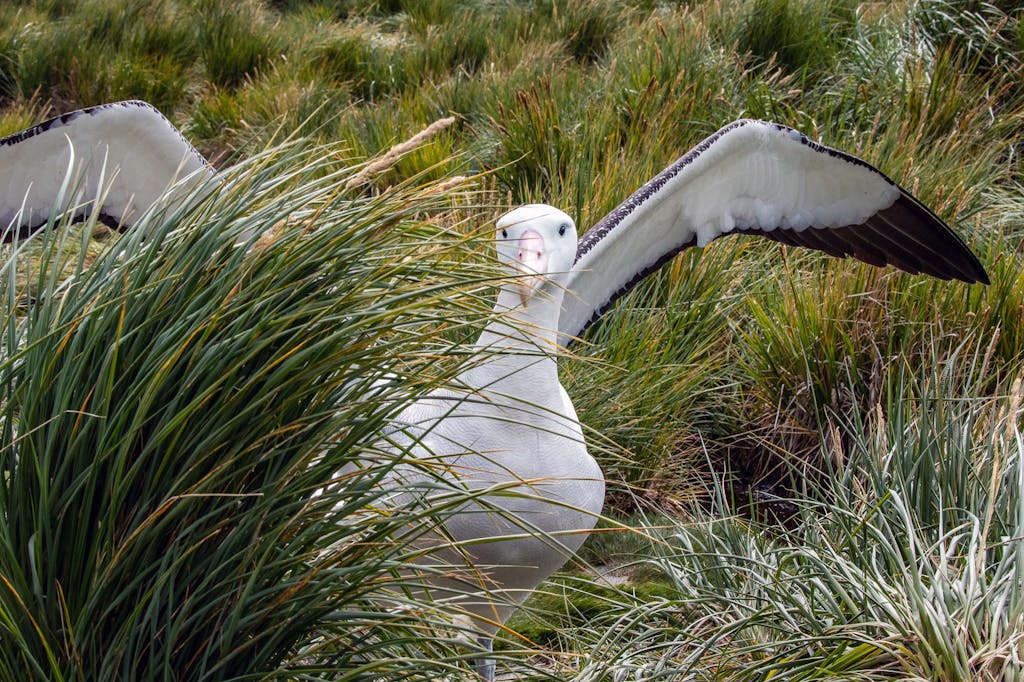
“I was fortunate enough to visit Prion Island twice, on two separate voyages with Silversea. One of the first things you notice about the island itself is that it teems with fur seals, who laze on the beach and nestle in the tall tussock grass behind. Visitors are restricted to designated paths to protect the animals and a wooden boardwalk leads to two viewing platforms.
My first time on the island was amazing—I scurried as quickly as possible to the upper platform, from where, about 30m away, I saw Wandering Albatrosses at their nesting site for the first time in my life, amid a spectacular vista of mountains and water. They were without threat and at peace. It was such an exhilarating feeling. But the second time was a very special moment, indeed.”
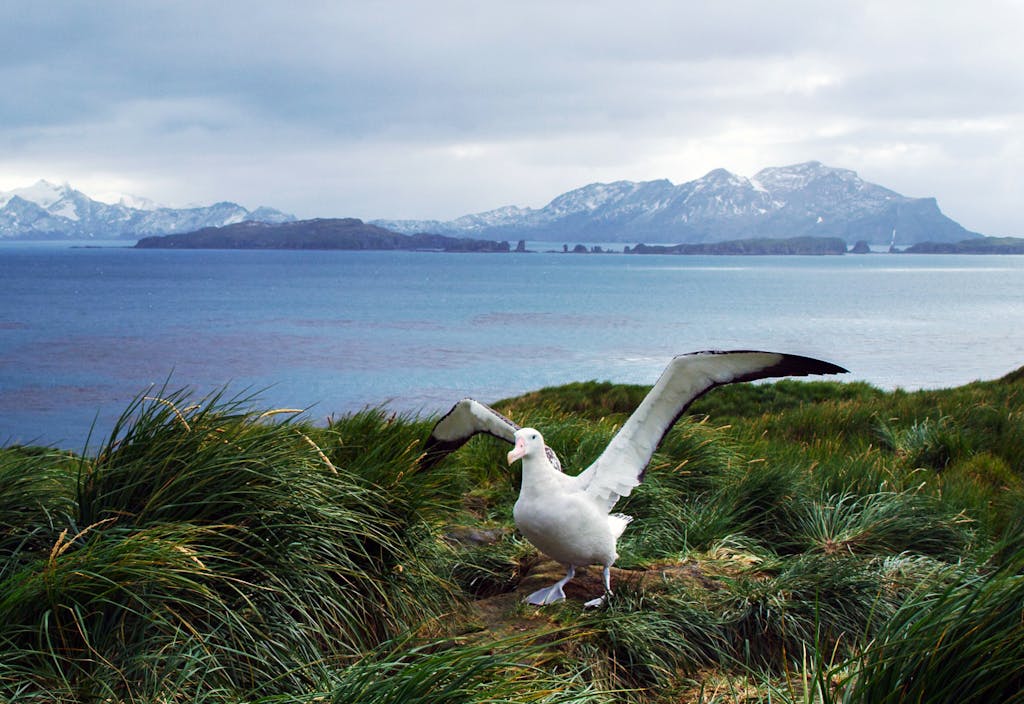
Seizing Opportunity: “As a filmmaker, I’m very fortunate to be able to join the shore party, disembarking the Zodiacs before virtually anybody else. This means I can essentially film a destination entirely alone and I don’t have to worry about getting in anybody’s way. I knew I had roughly 15 minutes to capture the footage I wanted. On this particular day, the weather conditions were perfect: it was slightly overcast and reasonably calm, but most importantly, there was a strong enough breeze for the birds to take off, which is essential when filming. I was prepared.”
I needed to rush up the boardwalk, set up my equipment, and pray for movement. After landing the Zodiac’s on the beach, though, nature was against me: fur seals, although spectacular and fascinating in their own right, were not my desired subject on the day and they blocked my access to the viewing platform. I had to be patient.”
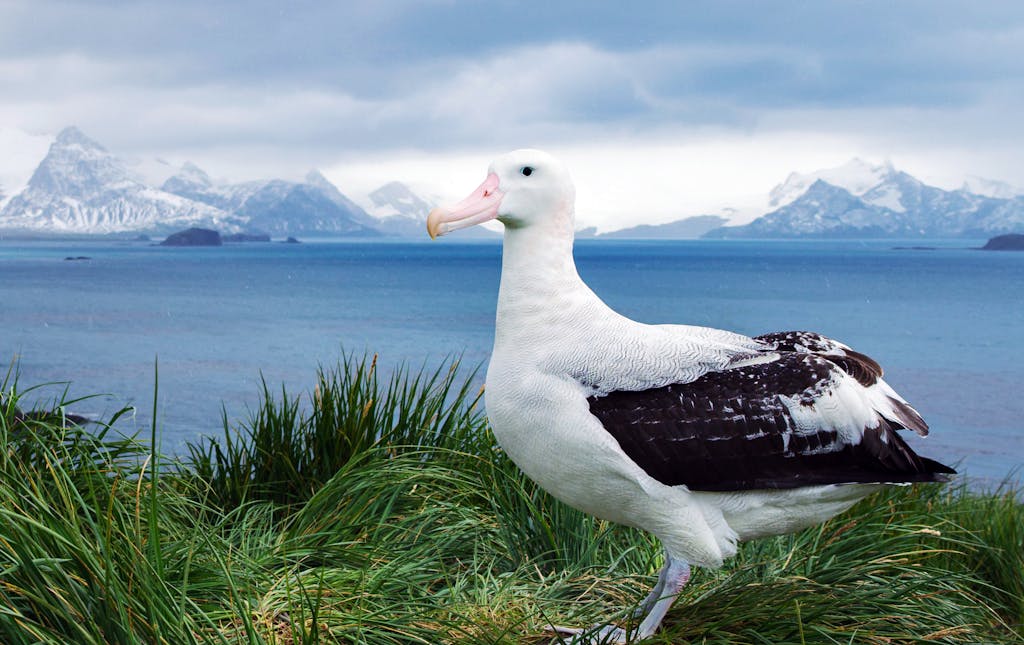
A moment to cherish: “After what seemed like hours, the walkway finally cleared and I was able to pass without disturbing the seals. From the first platform, there’s an amazing view that looks out over the tussock grass and an expanse of water towards the snow-capped mountains of South Georgia. It’s beautiful.
You never know where the albatrosses will be exactly: they could either be right next to the platform or far away among the grass, out of sight. When I reached the platform on this particular day, I saw two enormous birds performing the mating ritual about 15m from me, their huge wings spread out wide in an act of courtship. I couldn’t believe it; it was a very special moment that I just had to capture on film.
I scrambled to set up my tripod and attach my long lens to my camera, before hitting record to capture great footage of the albatrosses’ mating ritual. I couldn’t believe it. But then, only 3-5 minutes later, one of the mating pair slowly approached me with its wings fully extended, until just two meters away. Unbelievable! The bird was so close that my 100-400mm zoom lens was ineffective. It was too close to focus. This moment never usually happens. I had to act fast.
Changing a lens on my camera takes a couple of minutes. Not only do you have to switch everything off, find the right equipment and change the lens over, but there is also a 24-second delay from starting the camera to being able to record. As my camera takes what seems like an age to ready itself, the wind gusts under the enormous wings of the albatross just two meters from me. That was the longest 24 seconds of my life!
In the moment, I needed to be calm. The Wandering Albatross looked directly at me before turning around into this amazing backdrop and opening its wings fully. It was as if the bird was performing for me. Everything came together. The scene was set and I was ready. I just let the camera film and focused on the framing. I was free to enjoy the moment, which I’ve come to appreciate above all else when filming these kinds of unique encounters with Mother Nature.”
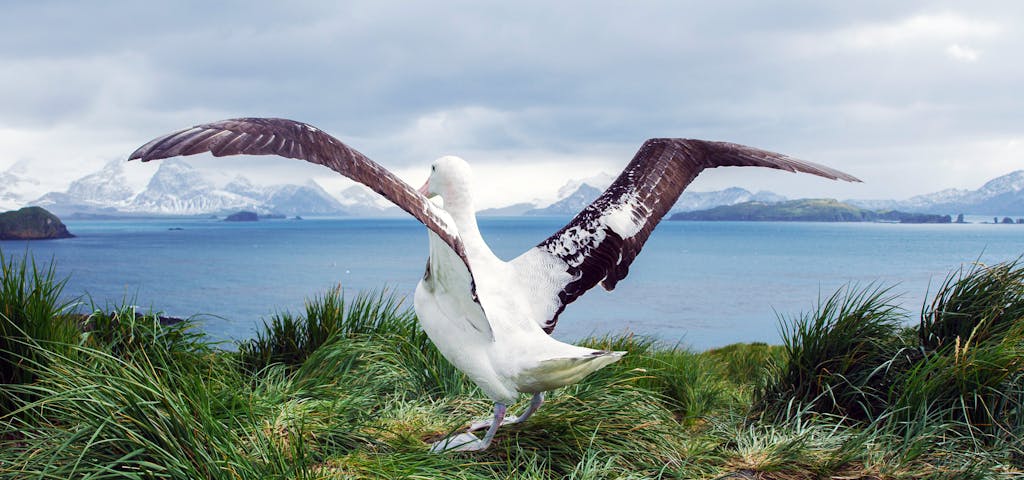
“When I showed the Wandering Albatross video footage to our Ornithologist back on board Silver Explorer, he couldn’t believe it. Our guests were in awe too—some even shed tears when they saw it in the end-of-voyage highlight film! But this encounter was just one extraordinary moment in a series of unforgettable experiences on this particular voyage.
Overcoming challenges: “I don’t consider myself to be a wildlife filmmaker. I sometimes struggle to contain my excitement when filming animals, which means that I start shaking as adrenaline takes over. I can’t contain myself. Luckily, my 24-70mm lens minimizes movement.
When I work for the likes of the BBC, I might spend a week at a time in a hide to capture a shot. There, it’s more about building up behavioral shots to form a sequence. In this instance, my time was limited and so the odds were against me. This was a more authentic moment that happened by chance. It’s unlikely that I’ll ever experience anything like it again. Nevertheless, the wildlife on South Georgia is so abundant that you’re sure to witness many unique moments.
I consider myself to be a bit of a perfectionist. I’m always thinking of ways to make my shots even stronger—in this instance, the wings could have been extended slightly more and the body could have been straighter. All things considered, though, this moment was nothing short of perfect to me.”
